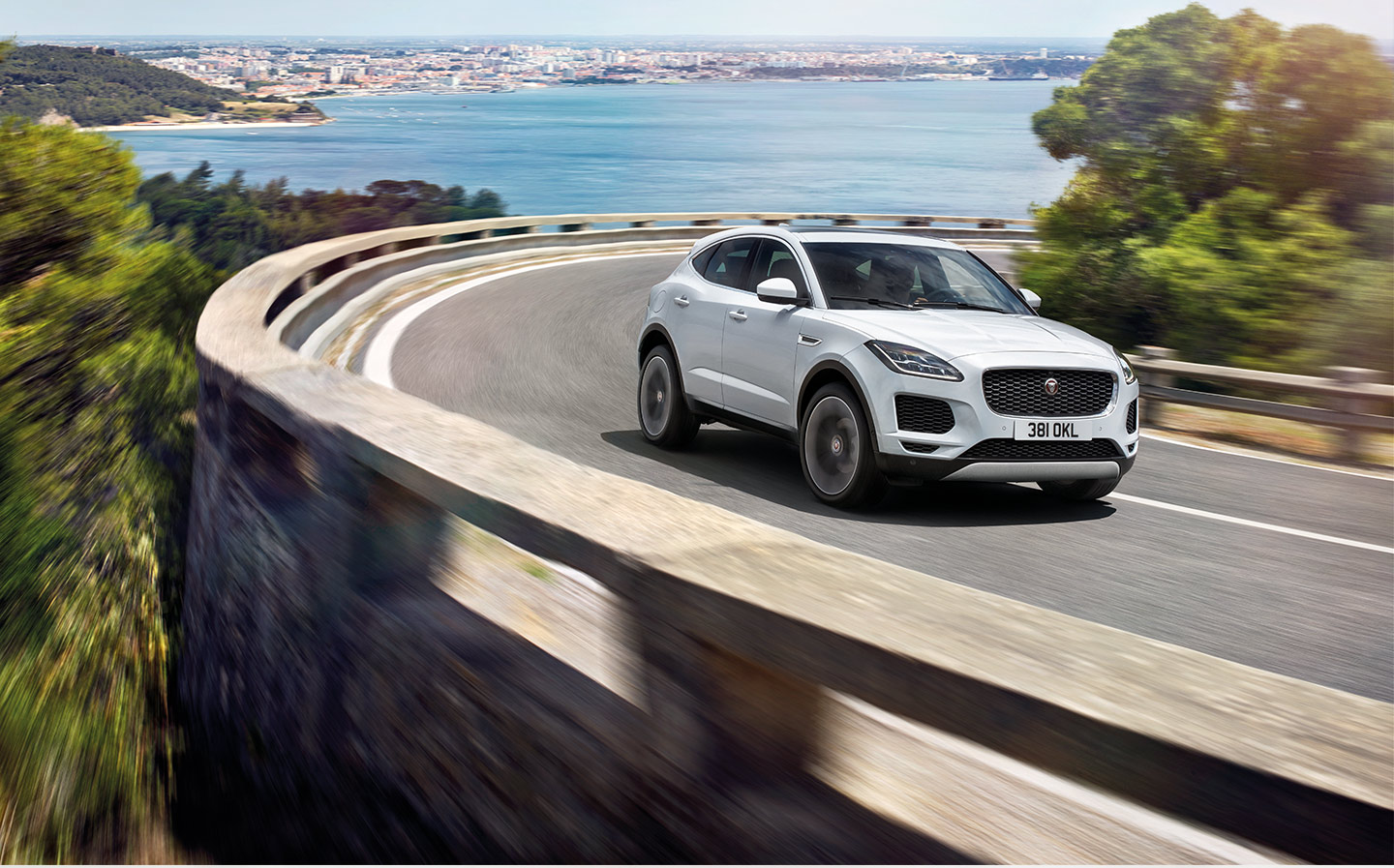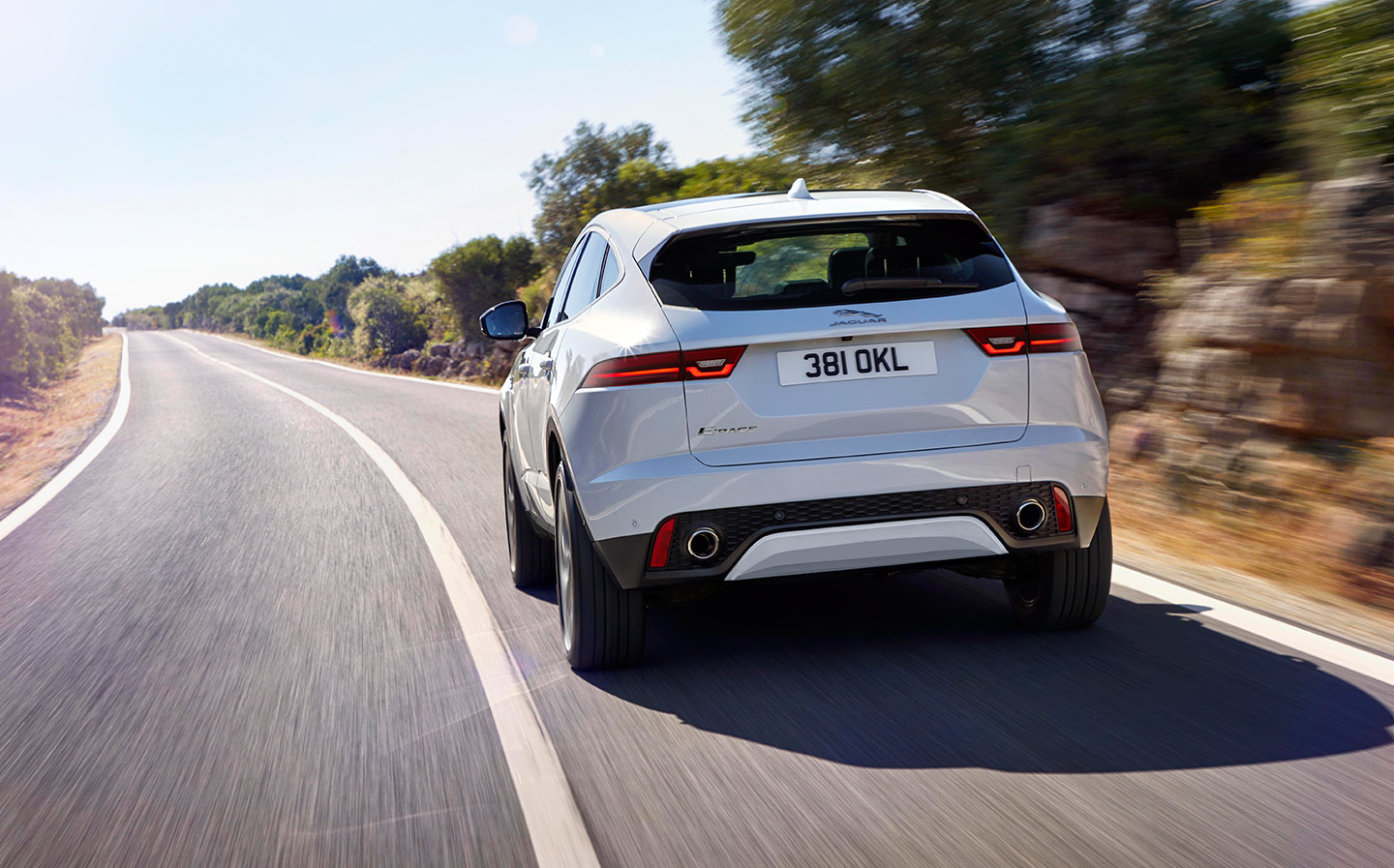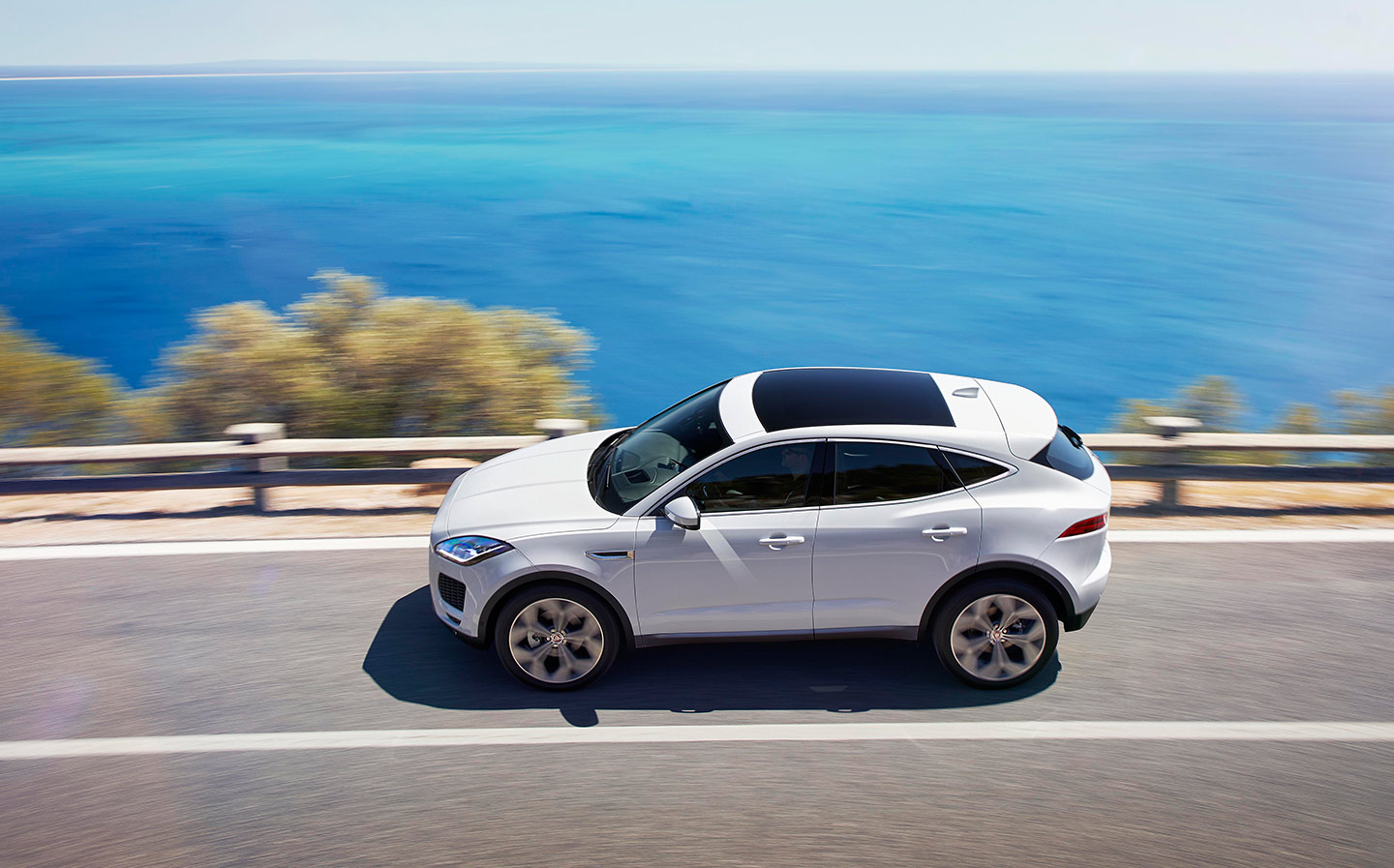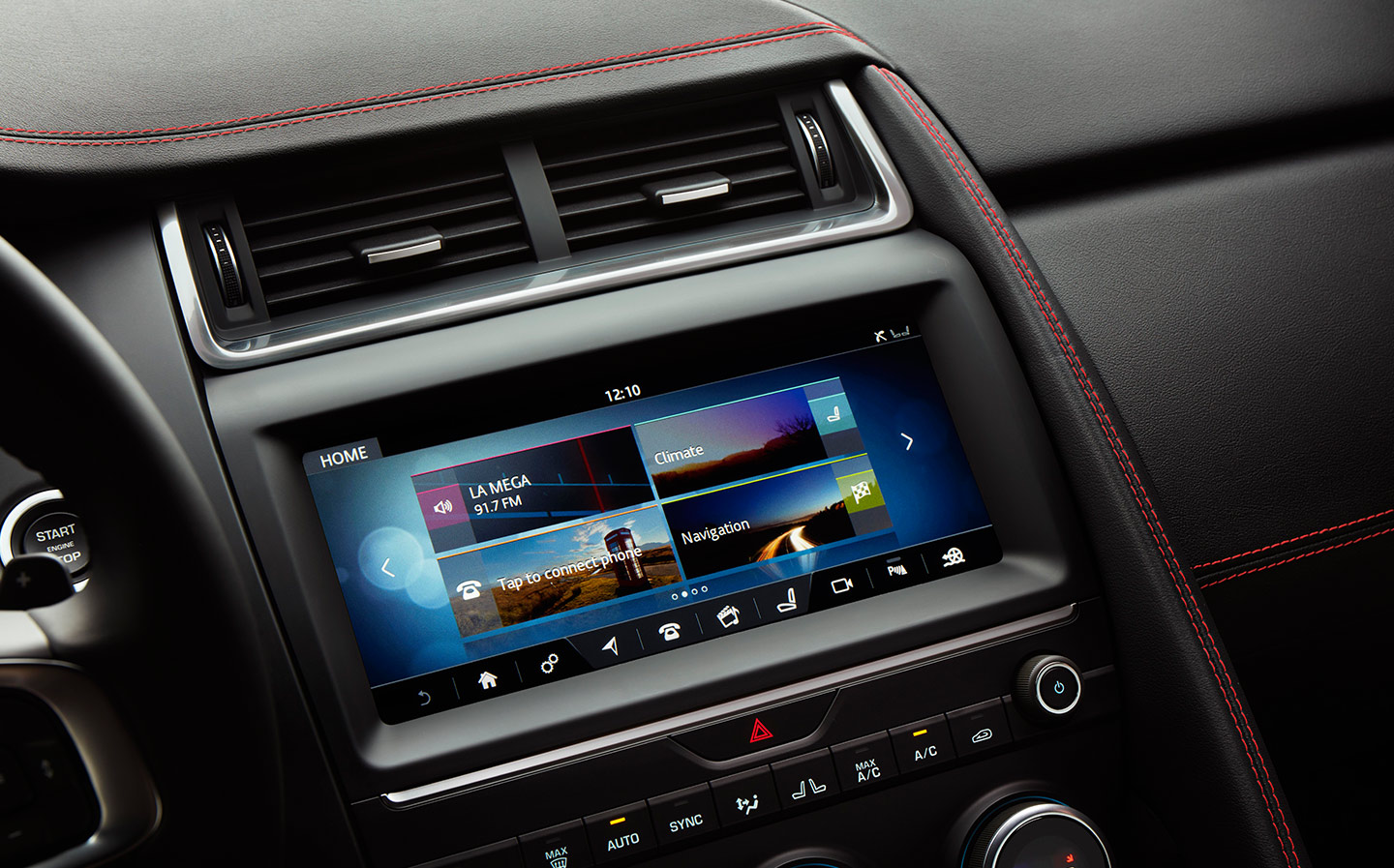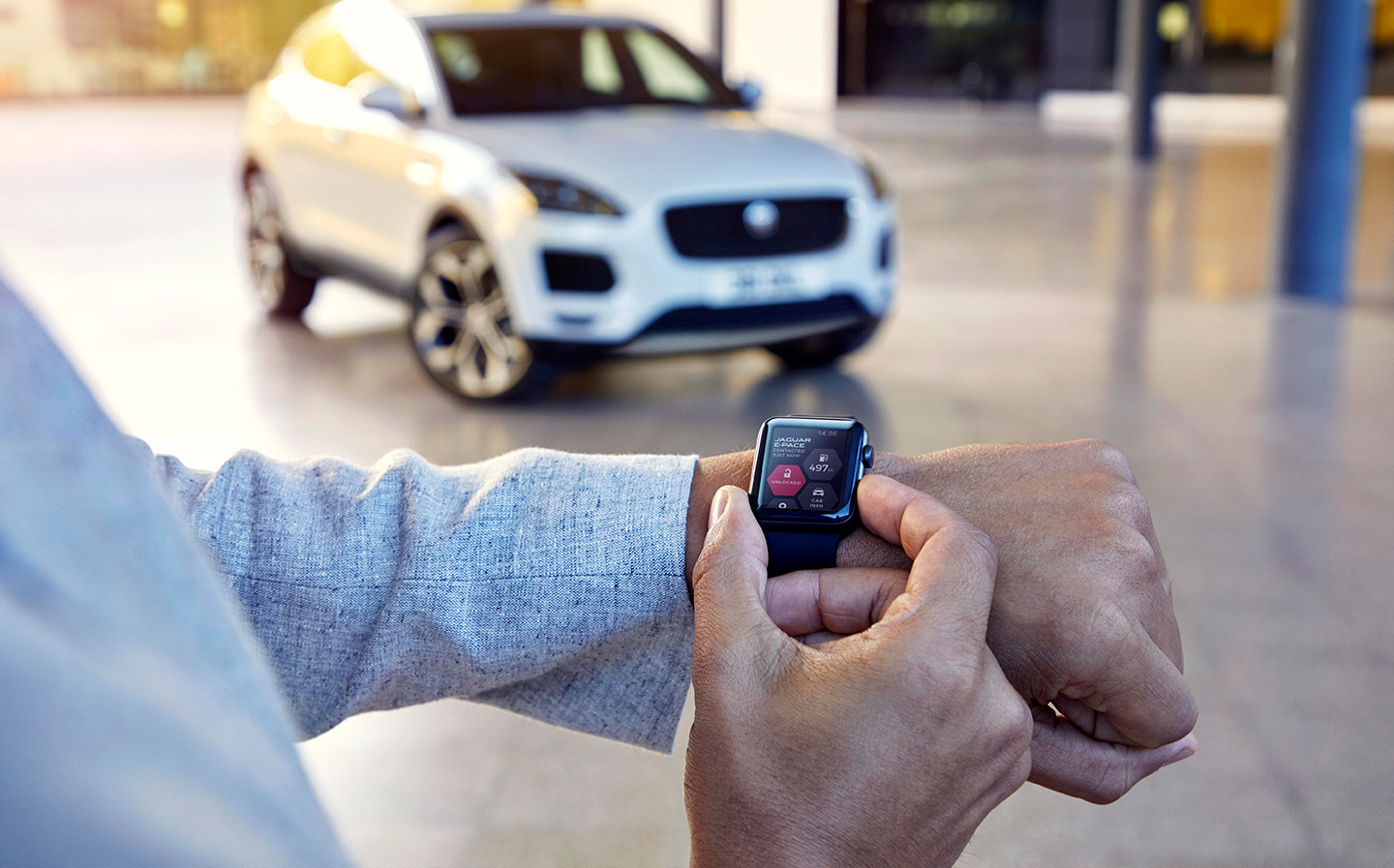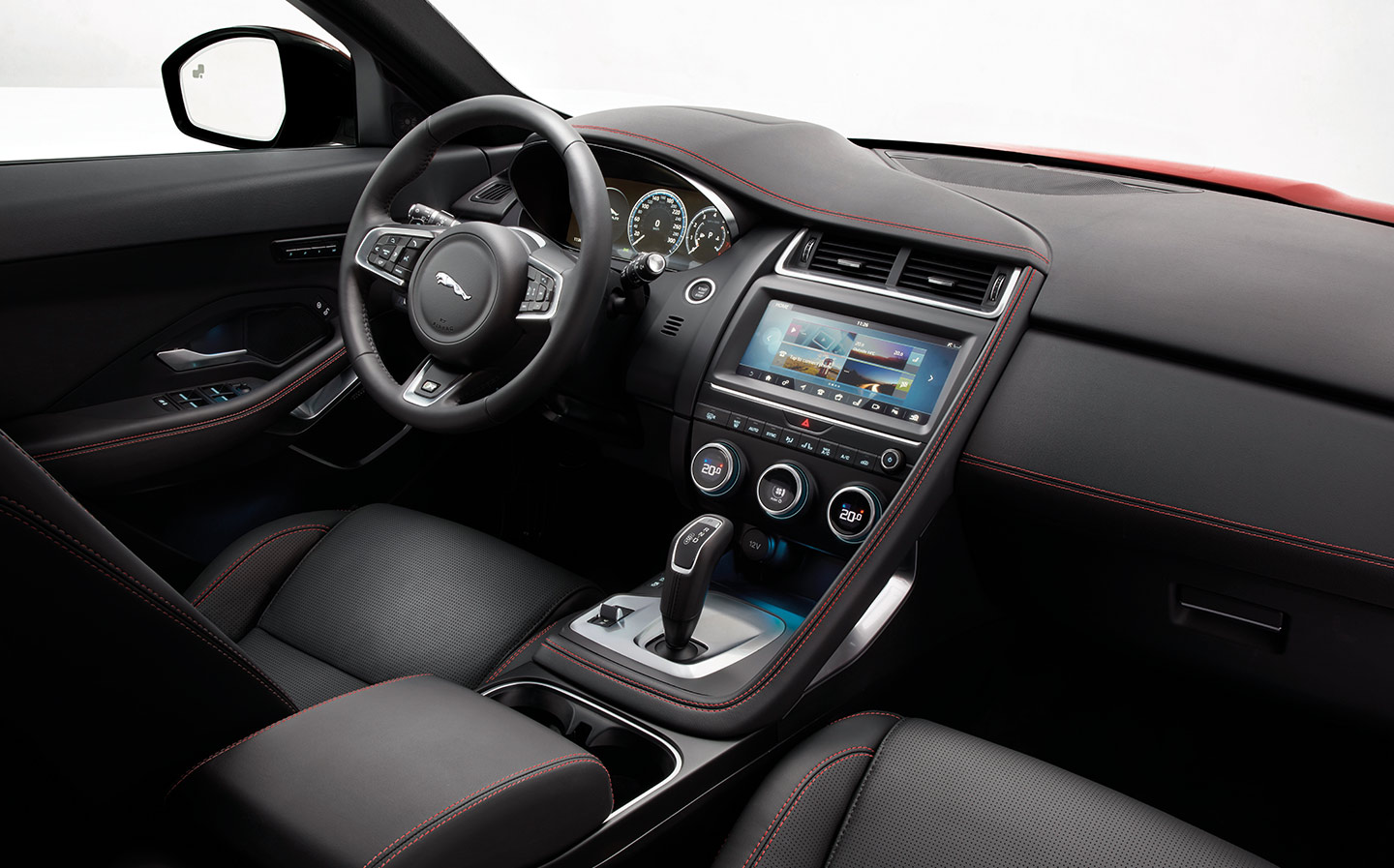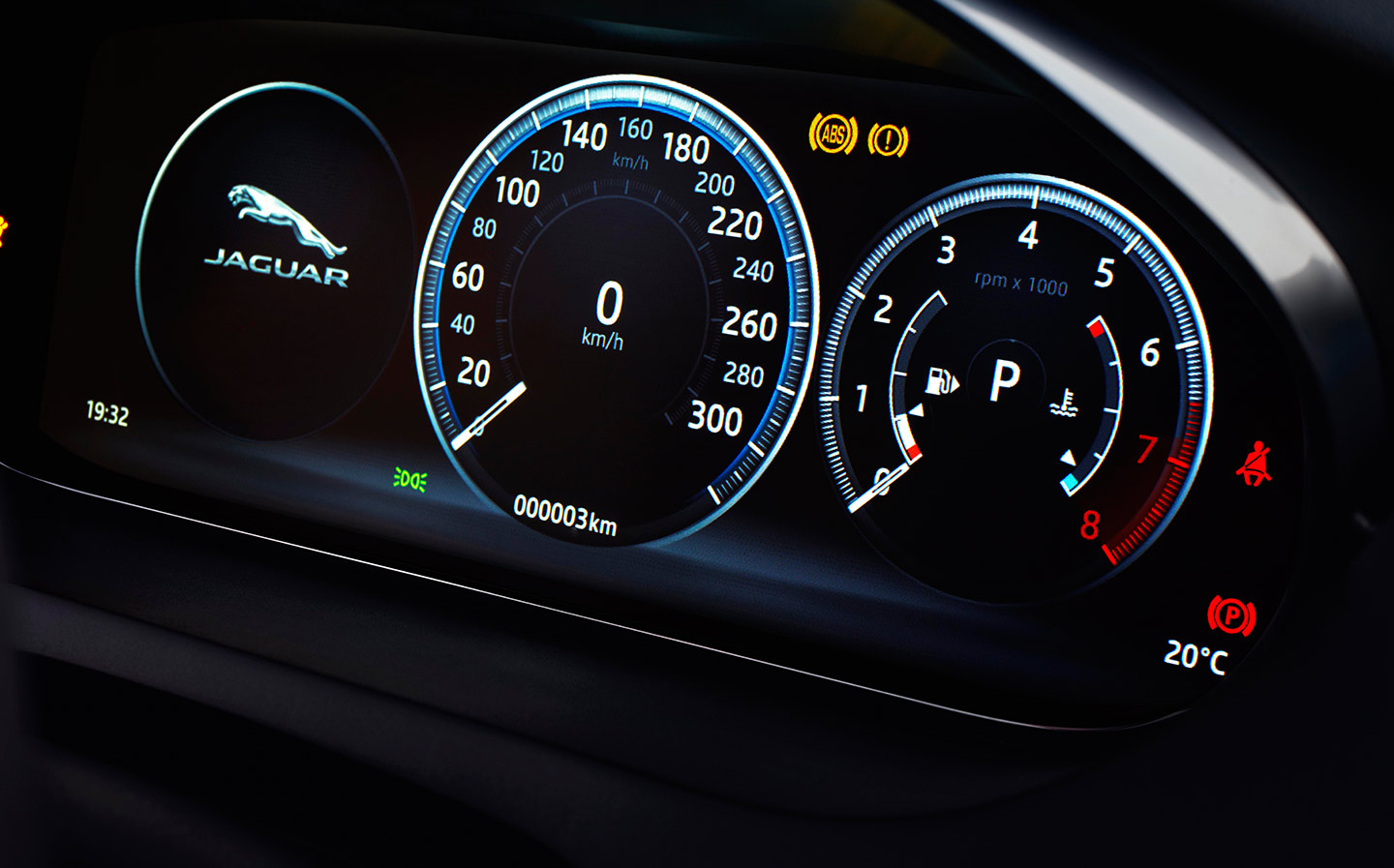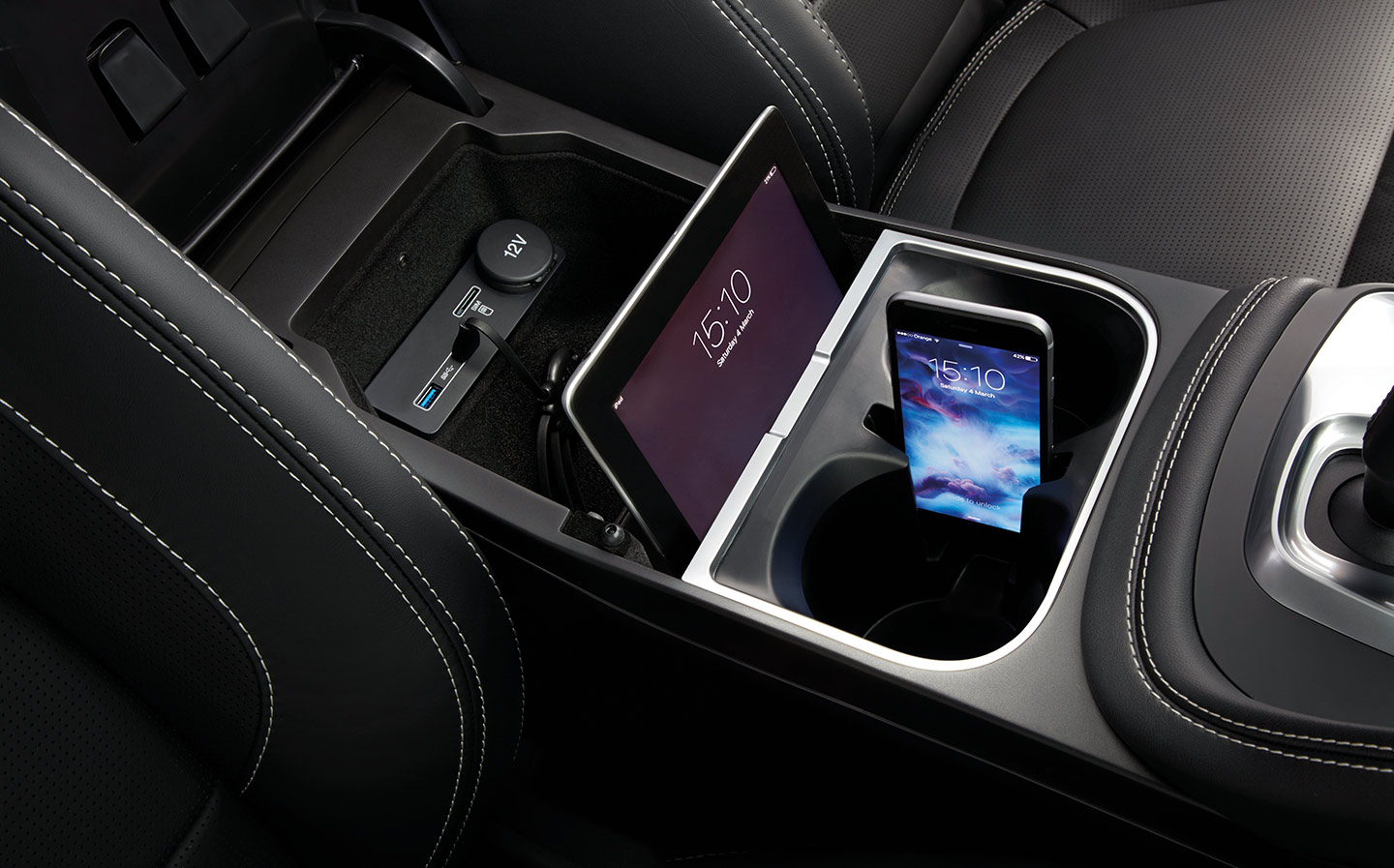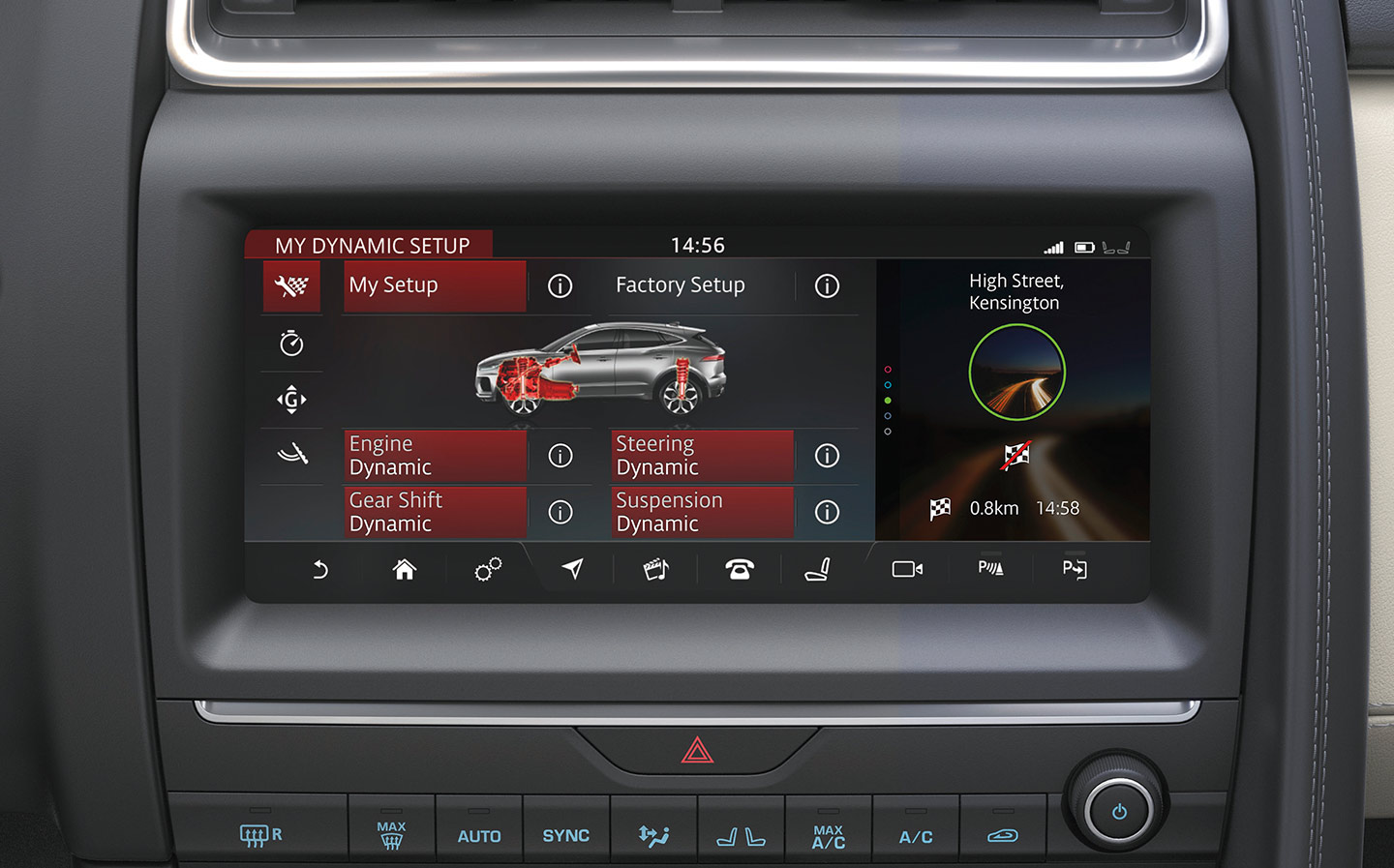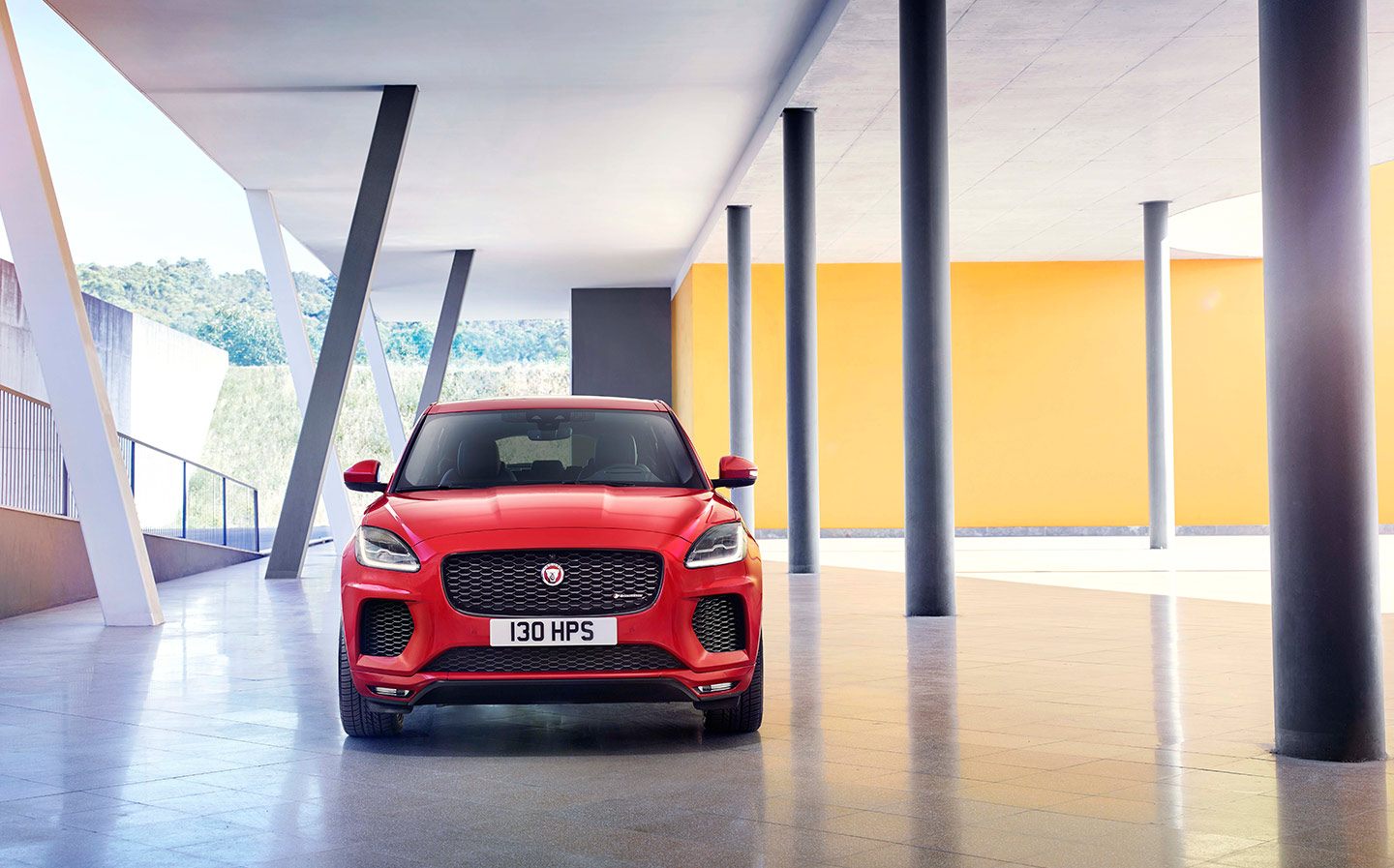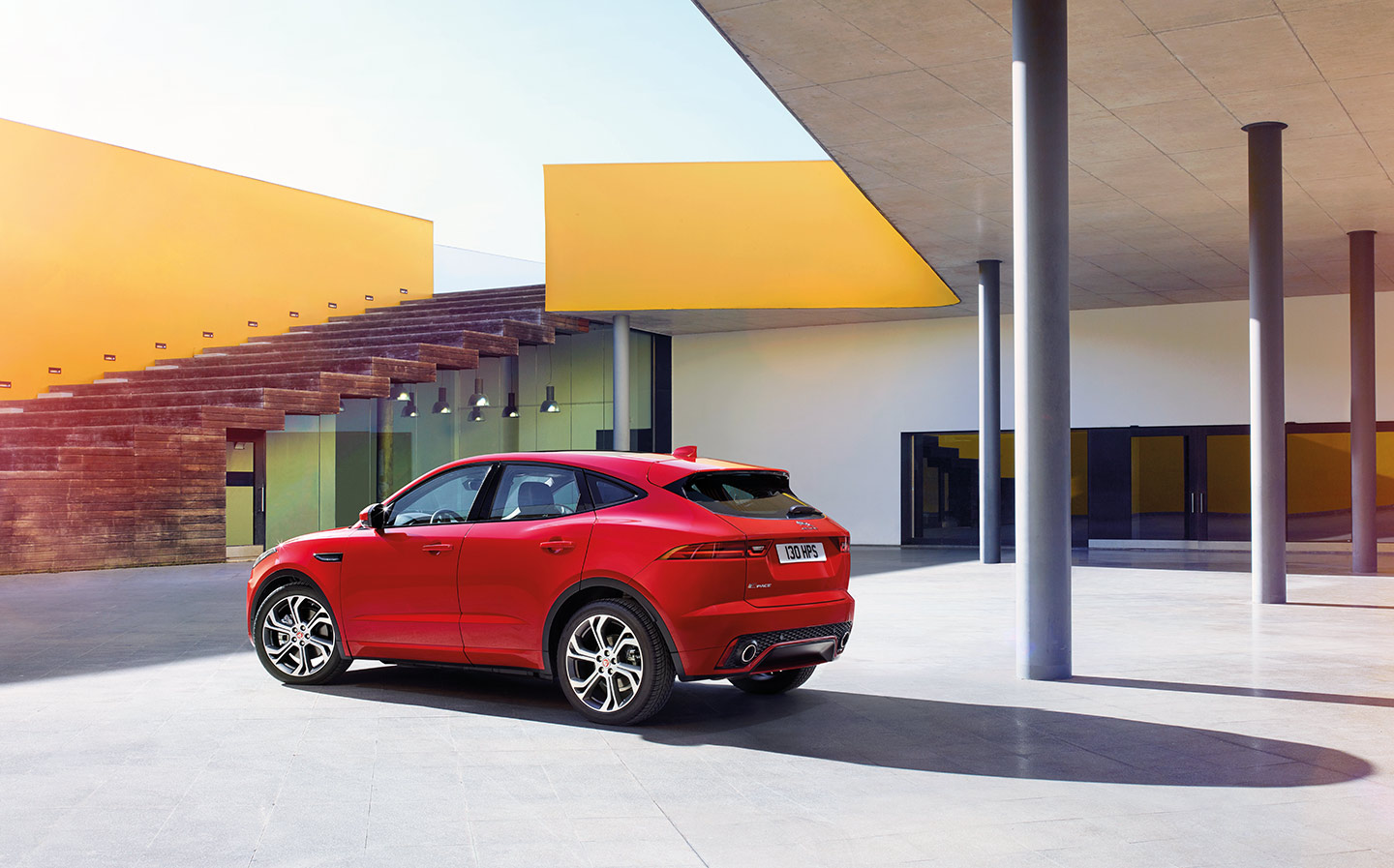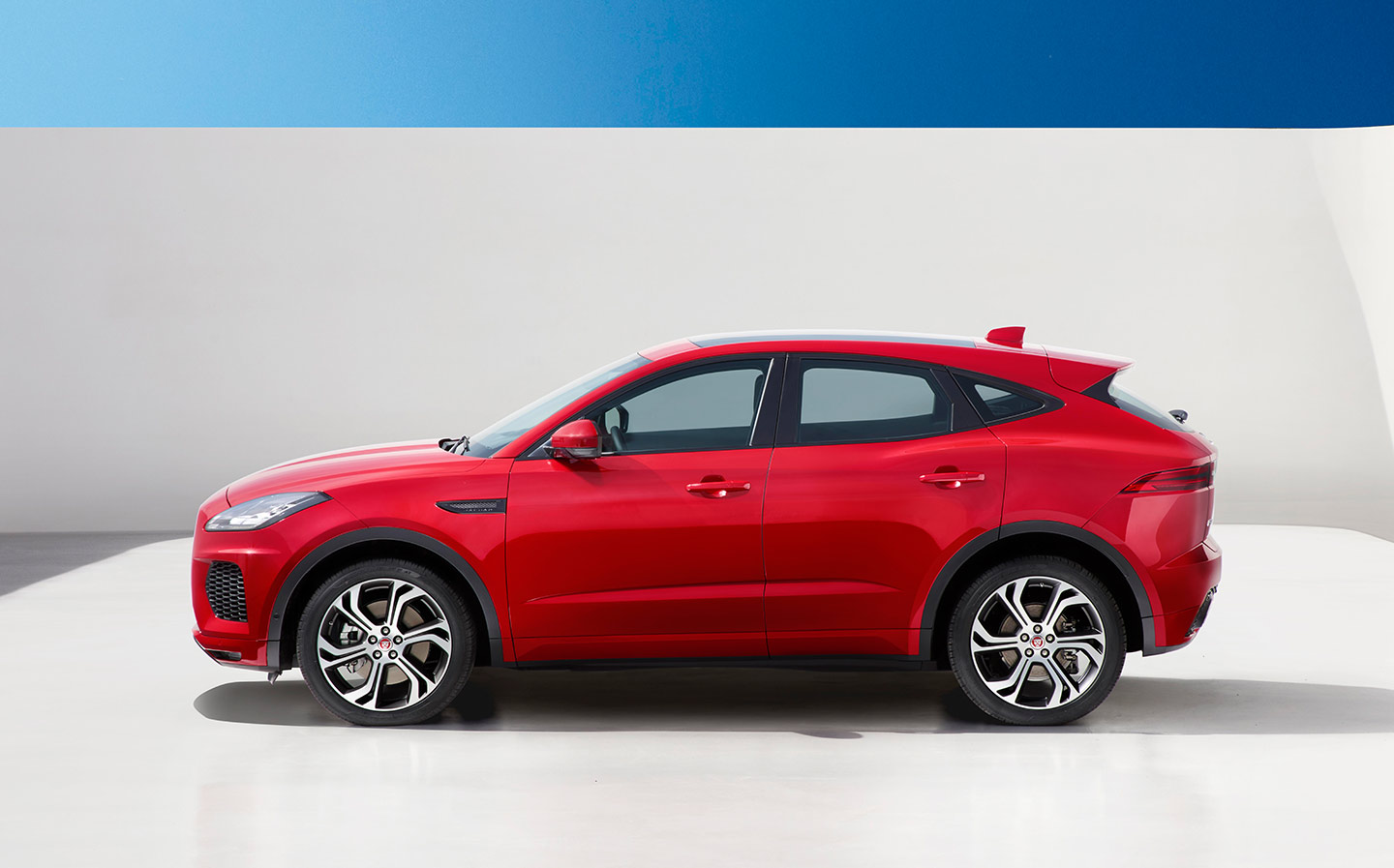2017 Jaguar E-Pace SUV: details, price, photos, video and release date
Everything you need to know about the F-Pace's baby sister
THE E-Pace is not, as the name suggests, Jaguar’s first electric SUV — that will be the I-Pace, which the British car maker unveiled at the Los Angeles motor show last year. No, the E-Pace is the baby sister of the F-Pace, Jaguar’s mid-size SUV launched at the end of 2015, and is powered by conventional petrol and diesel engines.
It is part of a campaign by Jaguar to expand its SUV offering, as sales of so-called crossovers — high-riding vehicles built on car platforms but with jacked-up suspension and more rugged looks — continue to boom. In the first quarter of 2017 European sales of premium mid-sized SUVs, such as the Mercedes GLC, Volvo XC60 and BMW X3, were up 27% on the same period in 2016.
Browse NEW or USED cars for sale
The F-Pace, Jaguar’s first SUV, appears among the 10 bestsellers in the category, but it expects the smaller E-Pace to do even better. The Range Rover Evoque, from its sister company Land Rover, is a direct rival to the E-Pace and outsells the F-Pace despite being a little long in the tooth now, so Jaguar Land Rover (JLR) is likely to steal some of that market from itself.
Here’s what you need to know about Jaguar’s little SUV.
How big is the Jaguar E-Pace?

The E-Pace is built on the same platform as the Range Rover Evoque and so is a similar size. It’s 4,395mm long and 1,984mm wide, slightly larger than the 4,370mm x 1,900mm Evoque.
The Jaguar is also slightly longer between the front and rear axles: wheelbase is 2,681mm, to the Evoque’s 2,660mm. Jaguar says this allows it to seat five in comfort, with generous rear legroom.
How much boot space is there?

The E-Pace has exceptional boot space compared with the Evoque: 577 litres with the rear seats up, compared with just 420 litres for the Range Rover. Folding the back seats gives a different story, though, as the Jaguar then yields 1,234 litres, against 1,445 litres for the Evoque.
Jaguar says the load space is one of the widest in the class, however, and can accommodate a folded pushchair, a full set of golf clubs sideways or six flight suitcases.
Under the floor is a further 93-litre cavity, if a spare wheel is not specified.
How fast is the Jaguar E-Pace?

It depends which engine you go for, of course. There will be three versions of a 2-litre diesel, producing 148bhp, 177bhp and 237bhp, and two versions of a 2-litre petrol, with 246bhp and a range-topping (for now) 296bhp.
Standstill-to-62mph acceleration times range from 10.7 seconds for the 148bhp diesel with four-wheel drive (the front-wheel-drive version can do it in 10.1 seconds) to 6.4 seconds for the 296bhp petrol. Top speed is 120mph to 151mph.
All E-Paces come with JaguarDrive Control, which allows drivers to switch between Normal, Dynamic, Eco and Rain, Ice and Snow modes.
How fuel-efficient is the Jaguar E-Pace?

In the official European combined-cycle test, the front-wheel-drive lowest-power diesel manages 60.1mpg, but that drops to 54.3mpg when all four wheels are driven. Add an automatic gearbox and it drops again to 50.4mpg. The 177bhp diesel offers exactly the same economy as the lesser engine. The most powerful diesel is thirstier, though, at 45.6mpg.
The petrol engines don’t score so well: they manage 36.7mpg and 35.3mpg respectively.
How much does the Jaguar E-Pace cost to tax?

The vehicle excise duty rules changed in April this year. Cars are still rated on CO2 emissions in the first year of ownership, and the E-Pace will cost £160-£500 for the diesels and £800 for either petrol model.
From year two there is now a £140 flat rate for all petrol and diesel cars that cost less than £40,000 new. With prices starting at £28,500, many E-Paces will fall into this bracket, but the top-spec cars and those with lots of options will bust the price barrier and incur an extra £310 a year for five years.
Is the Jaguar E-Pace any good off road?

We won’t know for sure until we drive it, but as it comes from the same stable as Land Rovers, we expect it to be no slouch when the going gets muddy. All but the entry-level version have four-wheel drive as standard; an optional Adaptive Dynamics suspension package adds smart dampers that continuously monitor vehicle movements and adapt to the conditions.
Jaguar boasts of the car’s short front and rear overhangs of 882mm and 832mm respectively, which will aid off-roading ability. However, JLR hopes to guide customers wanting a small but tough crossover towards the Evoque, describing the E-Pace as primarily a sports vehicle with practical packaging. In other words, it’s most at home on tarmac.
What will it be like on road?

Again, we need to drive it, but the suspension is based on the F-Pace’s and tuned for sportiness, so it’s not a stretch to suggest it’ll be one of the more fun SUVs to drive. Jaguar says it has used stiff suspension bushes and anti-roll bars to “enhance the sense of performance by improving steering responses and control while ensuring low roll angles”. In English: don’t expect it to be a pudding.
The Adaptive Dynamics package is designed to take this a step further: it responds instantly to the driver and makes the suspension on the outside edge of a corner stiffer, giving the driver greater control while minimising body roll.
As with the F-Pace, the Active Driveline all-wheel-drive system has a rear bias.
What’s the maximum weight a Jaguar E-Pace can tow?
The E-Pace can tow up to 1,800kg (braked).
How safe is the Jaguar E-Pace?

We don’t have Euro NCAP crash test results yet, but Jaguar says it has used “a variety of ultra-high-strength steels, lightweight aluminium, advanced composites and precision processes to create a compact SUV capable of delivering Jaguar dynamics and meeting strict global safety standards”.
Safety tech includes stereo cameras for automatic emergency braking and pedestrian detection, active cruise control, lane-keeping and blind spot assistance and traffic sign recognition with an adaptive speed limiter.
Front and rear parking aids are standard on every E-Pace, and a new Forward Traffic Detection system warns drivers of approaching vehicles at junctions where visibility is restricted.
There’s even a pedestrian airbag, which deploys from beneath the trailing edge of the bonnet to cushion a pedestrian in the event of a collision. This is an idea that Volvo (naturally) pioneered in 2013.
Jaguar E-Pace infotainment and gadgets

The E-Pace is the first car to have Jaguar’s next-generation thin-film transistor (TFT) head-up display, which can project up to 66% more information onto the windscreen using full-colour graphics. Vehicle speed and navigation are in full view at all times, with alerts and updates for the infotainment, safety and convenience features all projected directly into the driver’s eyeline – reducing the need to look away from the road.
Jaguar’s Touch Pro infotainment system, installed in every E-Pace, has voice control and a 10in touchscreen. Buyers can upgrade to a 12.3in full-colour TFT instrument panel and either of two audio systems from Meridian.
As with other new models from JLR, including the Range Rover Velar, the Jaguar E-Pace is available with a waterproof Activity Key wristband that allows the driver to open and close the car by tapping it against the tailgate. It’s a handy feature (excuse the pun) that allows you to lock the main key inside the vehicle when running, swimming or cycling.
How much does the Jaguar E-Pace cost?

Prices start at £28,500 for the D150 manual in front-wheel-drive configuration. Four-wheel drive takes the price up to £30,040, or £31,800 with an automatic gearbox.
The next variant in the range is the D180, which is only available with four-wheel drive. The manual costs £30,790, and the auto £32,550. The flagship diesel is the D240, which is four-wheel-drive and automatic and costs £40,850.
The entry-level petrol version is currently the P250 AWD automatic, at £35,160. The P300 AWD auto is £45,660.
Depending on the engine chosen, there is a choice of an entry-level trim and S, SE and HSE versions.
When does the Jaguar E-Pace go on sale?

Buyers can order now. The E-Pace First Edition, based on the R-Dynamic SE specification pack, is available for the first full year of sales, powered by Jaguar’s 177bhp Ingenium diesel or 246bhp Ingenium petrol engine, paired with the nine-speed ZF automatic transmission.


